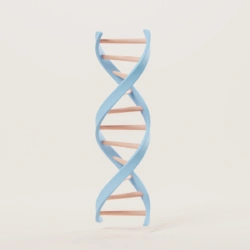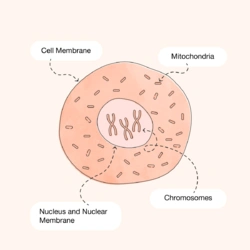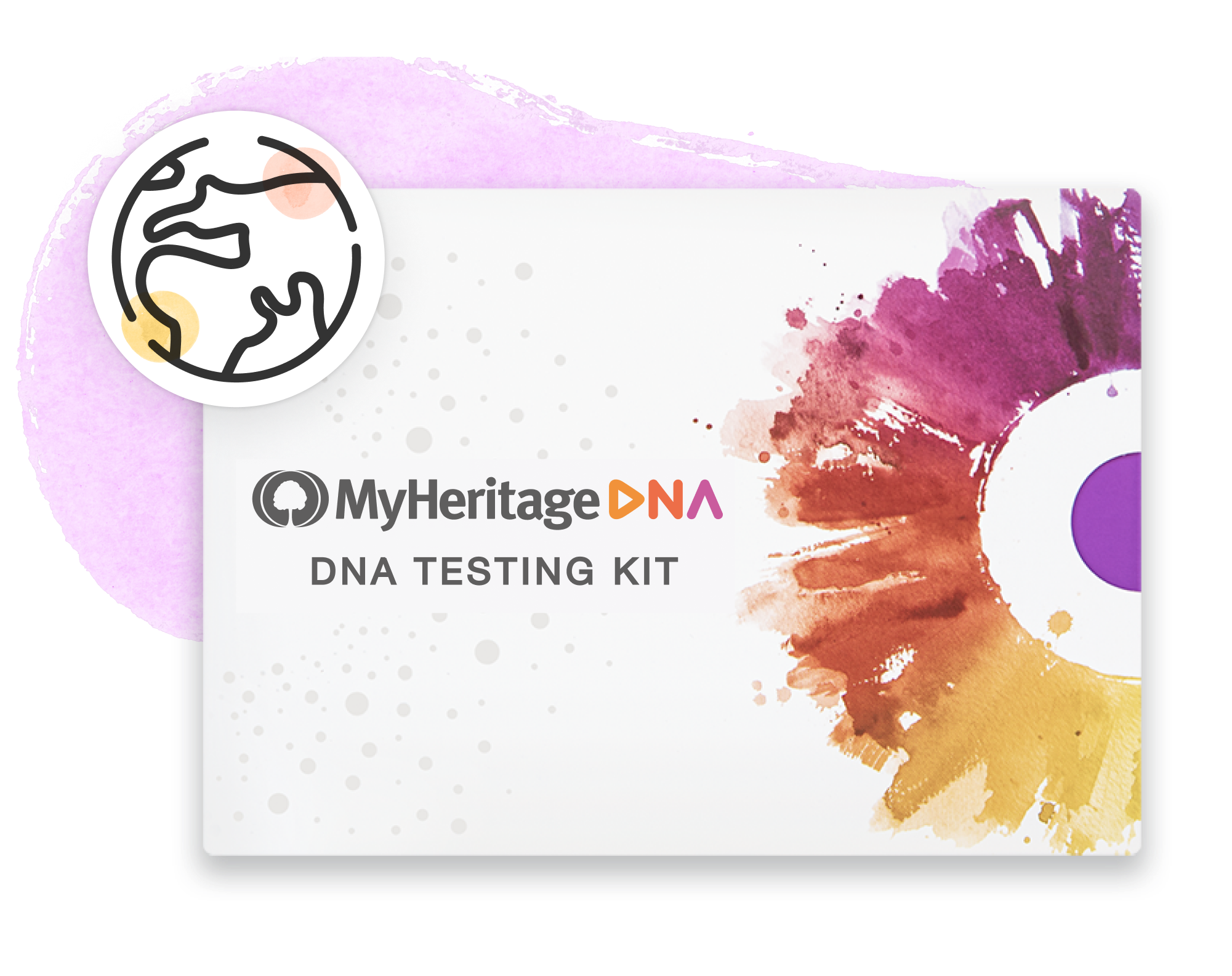See all articles relating to: Genetic origins
DNA, or deoxyribonucleic acid, is the blueprint for life in humans and most other organisms as well. DNA is also the foundation for genetic genealogy, which is based on DNA testing.
Research your ancestors on MyHeritage
The components of DNA

While 99.9% of all human DNA is identical, one-tenth of one percent is not. Humans have about 3.2 billion base pairs of DNA, or locations where each parent contributes a special letter (T, A, C, or G) that represents one of four nucleotides. The four nucleotides, Thymidine, Adenine, Cytosine, and Guanine chemically bond to each other as building blocks, joining together to create the familiar spiraling double-helix shape.
About 3,200,000 DNA positions differ between humans, and of course, each parent can contribute a different letter at each location. That small percentage is actually a large number of positions, enough to make each of us quite unique and identifiably different from each other. Most mutations are not harmful to their carriers and are called polymorphisms.
How is DNA organized?
Our DNA is organized into genes that contain the basic recipe for life, including important life-sustaining functions, as well as traits such as hair, eye and skin color.

All humans have thousands of genes that are grouped onto 23 pairs of chromosomes. Each parent contributes one whole chromosome to each child, but that chromosome is a combination of the two chromosomes each parent inherited from their own parents. The DNA in the 23 chromosomes that recombines is known as autosomal DNA. That dividing and reproduction process is known as meiosis.
DNA from those 23 chromosomes divides and is replicated during meiosis, when a gamete is produced in preparation for reproduction. Every person has two copies of each chromosome, one from each parent, but they can only pass one copy of each chromosome to a child. Therefore, their two chromosomes divide, with portions recombining into one chromosome to be contributed to a child.
During meiosis, the DNA in their two copies of each chromosome is divided in half and repackaged into one combined chromosome in preparation for a sperm and egg to join in fertilization.
Every normal cell in humans carries one copy of each pair of chromosomes in the nucleus, plus many copies of mitochondrial DNA in the cytoplasm.
How does inheritance work?

Each child receives half of the DNA of each parent in the form of one copy of each of their 23 chromosomes. The parent’s DNA from their two chromosomes at each location is combined into one chromosome that is contributed to each child, along with a corresponding copy from the other parent. While every child received half of each parent’s DNA, unless they are identical twins, they receive different portions of each parent’s DNA.
DNA accumulates mutations in each generation. When the DNA of related people is compared, these regions with family mutations match other relatives, but not people who are unrelated. The more closely people are related, the more closely their autosomal DNA matches. A child matches each parent exactly on each of their chromosomes, because all of one’s DNA is carried by one’s parents.
The 23rd sex selection chromosome
While each child receives a copy of exactly half of each parent’s DNA on chromosomes 1-22, chromosome 23 is different.
The 23rd chromosome is responsible for determining sex.
Men inherit a Y chromosome from their father, and women do not. The Y chromosome is responsible for making males male.
Females receive an X chromosome from their father. Their father’s X chromosome is responsible for making them females, since the father did not contribute his Y chromosome to them.
Both males and females receive one copy of their mother’s X chromosome. Her two X chromosomes combine to produce one X chromosome in the identical process as chromosomes 1-22.
However, the X chromosome contributed by men to their daughters is not divided and recombined, because men don’t have two X chromosomes. Since they received a Y chromosome from their father, they only have one X chromosome, inherited from their mother.
Because the X DNA has a unique inheritance path and is not uniformly recombined in each generation, it can be utilized for genetic genealogy, but needs a separate analysis because it’s not inherited or recombined in quite the same frequency.
Mitochondrial DNA – your matrilineal line
Another type of DNA used for genealogy is mitochondrial DNA. While Y-DNA is passed from father to son, with no admixture from any females in the lineage, mitochondrial DNA is passed from mothers to both sexes of their children – but only females pass it on.
Therefore, both men and women carry the mitochondrial DNA of their direct matrilineal, or mother to mother, line.
Since neither Y nor mitochondrial DNA are admixed with the DNA of the other parent, they are passed generation to generation, mostly intact, except for occasional mutations. Those small mutations only occur every few generations, but often enough to be useful to genealogists through testing and matching.
Both Y and mitochondrial DNA can be tested separately from autosomal DNA and is useful to genealogists both in terms of matching as well as geographical and/or cultural origins.
Different kinds of DNA tests for genealogy
While X-DNA, Y-DNA, and mitochondrial DNA can all be utilized for genealogy, not all testing companies off these tests. MyHeritage focuses on providing best-of-class autosomal DNA tools for genetic genealogists, including Shared Matches, Triangulation, Theory of Family Relativity, Chromosome Browser, AutoClusters, and cM Explainer.
See also
Explore more about DNA
- MyHeritage DNA
- How to Use Chromosome Browsers for Genealogy at MyHeritage Knowledge Base
- The Theory of Family Relativity™ for DNA Matches at MyHeritage Knowledge Base
- AutoClusters for DNA Matches at MyHeritage Knowledge Base
- How can I find triangulated DNA segments? on the MyHeritage Help Center
- What are AutoClusters? on the MyHeritage Help Center
- New Tools to Examine Shared DNA Matches on MyHeritage at MyHeritage Blog


